NTC Pedagogy For Primary And JHS Questions And Answers (Curriculum)
NTC Pedagogy For Primary And JHS Questions And Answers
NTC SHS Pedagogy Questions And Answers (Methods Of Teaching) 1
NTC SHS Pedagogy Questions And Answers (Methods Of Teaching) 2
NTC SHS Pedagogy Questions And Answers (Methods Of Teaching) 3
NTC SHS Pedagogy Questions And Answers (Curriculum Development) 1
NTC SHS Pedagogy Questions And Answers (Curriculum Development) 2
Content Areas For SHS Pedagogy For NTC Exams September 2023 Questions And Answers
NTC PEDAGOGY PAST QUESTIONS (SAMPLE QUESTION ON PEDAGOGY OF EDUCATION)
JOIN US ON WHATSAPP HERE
- Which type of curriculum is structured around a set of standards or learning goals?
a) Standard-based curriculum
b) Objective-based curriculum
c) Both a) b)
d) None of the above
Answer: a) Standard-based curriculum
2. Which type of curriculum focuses on specific learning objectives determined by educators?
a) Standard-based curriculum
b) Objective-based curriculum
c) Both a) and b)
d) None of the above
Answer: b) Objective-based curriculum
NTC Pedagogy For Primary And JHS Questions And Answers (Curriculum)
NTC Pedagogy For Primary And JHS Questions And Answers (Methods Of Teaching Primary And JHS) 1
NTC Pedagogy For Primary And JHS Questions And Answers (Methods Of Teaching Primary And JHS) 2
JOIN US ON WHATSAPP HERE
3. What is the main emphasis of standard-based curriculum?
a) Meeting specific benchmarks and achieving desired outcomes
b) Developing specific learning objectives
c) Customizing instruction based on student needs
d) None of the above
Answer: a) Meeting specific benchmarks and achieving desired outcomes
4. Which type of curriculum allows for more flexibility and customization in instructional methods?
a) Standard-based curriculum
b) Objective-based curriculum
c) Both a) and b)
d) None of the above
Answer: b) Objective-based curriculum
5. What do standard-based and objective-based curricula both prioritize?
a) Clear and specific goals and outcomes
b) Meeting national or regional standards
c) Personalized learning experiences
d) None of the above
Answer: a) Clear and specific goals and outcomes
6. Which type of curriculum is often based on predetermined standards set by an educational authority?
a) Standard-based curriculum
b) Objective-based curriculum
c) Both a) and b)
d) None of the above
Answer: a) Standard-based curriculum
7. Which type of curriculum focuses more on mastery of specific learning objectives?
a) Standard-based curriculum
b) Objective-based curriculum
c) Both a) and b)
d) None of the above
Answer: b) Objective-based curriculum
8. Which type of curriculum allows for ongoing assessment to monitor student progress towards the objectives?
a) Standard-based curriculum
b) Objective-based curriculum
c) Both a) and b)
d) None of the above
Answer: b) Objective-based curriculum
9. What guides the development of standard-based curriculum?
a) Educators or program developers
b) Specific learning objectives
c) Predetermined standards set by an educational authority
d) None of the above
Answer: c) Predetermined standards set by an educational authority
10. Which type of curriculum provides a framework for educators to guide instruction and support students in meeting required standards?
a) Standard-based curriculum
b) Objective-based curriculum
c) Both a) and b)
d) None of the above
Answer: a) Standard-based curriculum
11. Which of the following best defines curriculum development?
a. The process of teaching and instruction
b. The planned and organized framework of learning experiences
c. The assessment and evaluation of student progress
d. The continuous improvement of educational resources
12. What does curriculum encompass?
a. Instructional methods only
b. Assessment strategies only
c. Learning outcomes only
d. Content, instructional methods, assessment strategies, and resources
13. What does the curriculum set the direction and scope for?
a. Student learning
b. Teacher training
c. Parent involvement
d. School administration
14. Which element of curriculum focuses on what students are expected to achieve?
a. Goals and objectives
b. Content
c. Instructional methods
d. Assessment and evaluation
15. Which element of curriculum involves measuring student progress?
a. Goals and objectives
b. Content
c. Instructional methods
d. Assessment and evaluation
16. Which factor influences curriculum development by determining the desired student outcomes?
a. Educational philosophies
b. Societal needs
c. Subject area expertise
d. Curriculum resources
17. What is the purpose of adaptation and continuous improvement in curriculum development?
a. To ensure student achievement of goals and objectives
b. To align with evolving educational needs and goals
c. To gather feedback from stakeholders
d. To revise the content of the curriculum
NTC Pedagogy For Primary And JHS Questions And Answers (Curriculum)
NTC Pedagogy For Primary And JHS Questions And Answers (Methods Of Teaching Primary And JHS) 1
NTC Pedagogy For Primary And JHS Questions And Answers (Methods Of Teaching Primary And JHS) 2
JOIN US ON WHATSAPP HERE
18. Which type of curriculum is structured around a set of standards or learning goals?
a. Standard-based curriculum
b. Objective-based curriculum
c. Skills-based curriculum
d. Content-based curriculum
19. What is the focus of a standard-based curriculum?
a. Achieving specific benchmarks and desired outcomes
b. Developing measurable learning objectives
c. Meeting the needs of individual learners
d. Aligning with educational philosophies
20. What is the emphasis of an objective-based curriculum?
a. Achieving specific benchmarks and desired outcomes
b. Developing measurable learning objectives
c. Meeting the needs of individual learners
d. Aligning with educational philosophies
21. What is the philosophy underlying the primary curriculum?
a. Teacher-centered and content-focused
b. Child-centered and holistic
c. Standardized and outcome-driven
d. Discipline-based and specialized
22. What is one of the goals of the primary curriculum?
a. Acquiring advanced knowledge in specialized subjects
b. Preparing students for future careers
c. Nurturing personal and social development
d. Developing expertise in scientific inquiry
23. Which aspect of the primary curriculum aims to foster a love of learning and curiosity?
a. Acquisition of foundational knowledge and skills
b. Promoting personal and social development
c. Cultivating creativity and lifelong learning
d. Enhancing physical and emotional well-being
24. What are the objectives of the primary curriculum related to language and literacy?
a. Developing mathematical understanding and skills
b. Fostering curiosity and critical thinking in science
c. Building vocabulary, comprehension, and communication skills
d. Introducing children to their local community and culture
NTC Pedagogy For Primary And JHS Questions And Answers (Curriculum)
NTC Pedagogy For Primary And JHS Questions And Answers (Methods Of Teaching Primary And JHS) 1
NTC Pedagogy For Primary And JHS Questions And Answers (Methods Of Teaching Primary And JHS) 2
JOIN US ON WHATSAPP HERE
25. What does the primary curriculum aim to develop in children through mathematics instruction?
a. Scientific inquiry skills
b. Physical fitness and healthy lifestyles
c. Social interaction and communication skills
d. Mathematical understanding and problem-solving skills
26. Which subject area in the primary curriculum introduces children to basic scientific concepts and processes?
a. Language and literacy
b. Mathematics
c. Science and the natural world
d. Social studies
27. What does the primary curriculum seek to develop through social studies objectives?
a. Creativity and imagination
b. Personal and social growth
c. Physical fitness and well-being
d. Interpersonal skills and communication
28. What does the primary curriculum often incorporate related to arts, physical education, and personal development?
a. Vocabulary building and comprehension skills
b. Mathematical operations and problem-solving
c. Artistic expression and physical activity
d. Scientific inquiry and critical thinking
29. Which of the following is not an aim of the primary curriculum?
a. Fostering positive attitudes and values
b. Developing basic skills and knowledge
c. Nurturing personal and social growth
d. Preparing students for specific careers
30. What influences the specifics of the primary curriculum?
a. National or regional educational policies
b. Local educational authorities
c. International educational standards
d. Individual teacher preferences
NTC Pedagogy For Primary And JHS Questions And Answers (Curriculum)
NTC Pedagogy For Primary And JHS Questions And Answers (Methods Of Teaching Primary And JHS) 1
NTC Pedagogy For Primary And JHS Questions And Answers (Methods Of Teaching Primary And JHS) 2
JOIN US ON WHATSAPP HERE
31. What is a syllabus?
a) A study guide for exams
b) A roadmap for a course or program
c) A list of required textbooks
d) A summary of student grades
Answer: b) A roadmap for a course or program
32. Which type of syllabus focuses on developing specific skills or competencies?
a) Content-Based Syllabus
b) Skill-Based Syllabus
c) Chronological Syllabus
d) Task-Based Syllabus
Answer: b) Skill-Based Syllabus
33. Which type of syllabus follows a timeline or historical sequence?
a) Content-Based Syllabus
b) Skill-Based Syllabus
c) Chronological Syllabus
d) Task-Based Syllabus
Answer: c) Chronological Syllabus
34. What does an outcome-based syllabus emphasize?
a) Real-life tasks and activities
b) Specific learning outcomes or objectives
c) Sequencing of topics or subject areas
d) Developing specific skills or competencies
Answer: b) Specific learning outcomes or objectives
35. What information is typically included in a syllabus?
a) Course schedule and instructor’s contact information
b) Course description and learning outcomes
c) Required textbooks and materials
d) All of the above
Answer: d) All of the above
36. Which aspect of a syllabus helps in organizing and managing the course timeline?
a) Learning Outcomes
b) Course Description
c) Course Structure
d) Assessment Methods
Answer: c) Course Structure
37. What purpose does a syllabus serve in terms of accountability?
a) It outlines the instructor’s responsibilities only
b) It outlines the students’ responsibilities only
c) It sets the foundation for mutual accountability
d) It does not play a role in accountability
Answer: c) It sets the foundation for mutual accountability
NTC Pedagogy For Primary And JHS Questions And Answers (Curriculum)
NTC Pedagogy For Primary And JHS Questions And Answers (Methods Of Teaching Primary And JHS) 1
NTC Pedagogy For Primary And JHS Questions And Answers (Methods Of Teaching Primary And JHS) 2
JOIN US ON WHATSAPP HERE
38. Which type of syllabus focuses on organizing the course content based on specific topics or subject areas?
a) Content-Based Syllabus
b) Skill-Based Syllabus
c) Chronological Syllabus
d) Outcome-Based Syllabus
Answer: a) Content-Based Syllabus
39. What does a syllabus provide in terms of clarity and transparency?
a) Clear guidance on course content and expectations
b) A list of required textbooks and materials
c) A summary of student grades
d) None of the above
Answer: a) Clear guidance on course content and expectations
40. Which component of a syllabus identifies the knowledge, skills, or abilities students should possess upon completion of the course?
a) Course Information
b) Course Description
c) Learning Outcomes
d) Assessment Methods
Answer: c) Learning Outcomes
41. What does a syllabus help students with in terms of resource planning?
a) Identifying required textbooks and readings
b) Managing time effectively
c) Preparing for exams
d) Developing critical thinking skills
Answer: a) Identifying required textbooks and readings
42. What role does a syllabus play in communication and reference?
a) It promotes effective classroom communication
b) It ensures clear student-instructor communication
c) It serves as a reference for course information and policies
d) It encourages student collaboration
Answer: c) It serves as a reference for course information and policies
NTC Pedagogy For Primary And JHS Questions And Answers (Curriculum)
NTC Pedagogy For Primary And JHS Questions And Answers (Methods Of Teaching Primary And JHS) 1
NTC Pedagogy For Primary And JHS Questions And Answers (Methods Of Teaching Primary And JHS) 2
JOIN US ON WHATSAPP HERE
43. Which type of syllabus focuses on real-life tasks or activities that students need to accomplish?
a) Content-Based Syllabus
b) Skill-Based Syllabus
c) Task-Based Syllabus
d) Outcome-Based Syllabus
Answer: c) Task-Based Syllabus
44. What does a well-designed syllabus promote?
a) Effective teaching and learning
b) Memorization of facts
c) Passive student engagement
d) Reduced accountability
Answer: a) Effective teaching and learning
45. What is the primary purpose of a syllabus?
a) To confuse students with complex information
b) To provide a detailed summary of each class session
c) To guide and inform students and instructors about a course
d) To replace direct communication between students and instructors
Answer: c) To guide and inform students and instructors about a
46. Which component of a curriculum outlines the specific learning outcomes and goals that the curriculum aims to achieve?
a) Content
b) Goals and objectives
c) Assessment and evaluation
d) Teaching strategies and instructional materials
Answer: b) Goals and objectives
47. What does the scope component of a curriculum refer to?
a) The order in which topics will be taught
b) The specific knowledge and skills students will learn
c) The breadth or range of topics that will be covered
d) The methods and tools used to assess student learning
Answer: c) The breadth or range of topics that will be covered
48. Which component of a curriculum involves assessing student learning and evaluating their progress?
a) Content
b) Learning activities
c) Assessment and evaluation
d) Differentiation and accommodations
Answer: c) Assessment and evaluation
49. What are the tools used for formative assessment in a curriculum?
a) Tests and quizzes
b) Projects and presentations
c) Observations and feedback
d) Rubrics and criteria
Answer: c) Observations and feedback
50. Which component of a curriculum includes the methods and resources used by teachers to deliver instruction effectively?
a) Teaching strategies and instructional materials
b) Learning activities
c) Differentiation and accommodations
d) Time allocation
Answer: a) Teaching strategies and instructional materials
51. What are specific tasks or assignments that students engage in to reinforce and apply their learning called?
a) Learning activities
b) Goals and objectives
c) Differentiation and accommodations
d) Assessment and evaluation
Answer: a) Learning activities
NTC Pedagogy For Primary And JHS Questions And Answers (Curriculum)
NTC Pedagogy For Primary And JHS Questions And Answers (Methods Of Teaching Primary And JHS) 1
NTC Pedagogy For Primary And JHS Questions And Answers (Methods Of Teaching Primary And JHS) 2
JOIN US ON WHATSAPP HERE
52. Which component of a curriculum focuses on tailoring instruction to meet individual students’ learning needs?
a) Teaching strategies and instructional materials
b) Differentiation and accommodations
c) Learning activities
d) Assessment and evaluation
Answer: b) Differentiation and accommodations
53. What are cross-curricular themes or skills that can be integrated into a curriculum called?
a) Content
b) Goals and objectives
c) Differentiation and accommodations
d) Integration of cross-curricular themes or skills
Answer: d) Integration of cross-curricular themes or skills
54. What does the time allocation component of a curriculum refer to?
a) The allocation of resources for teaching
b) The amount of time students spend on learning activities
c) The assessment and evaluation of student learning
d) The allocation of time for each topic or learning activity
Answer: d) The allocation of time for each topic or learning activity
55. What component of a curriculum provides ongoing training and support to teachers?
a) Assessment and evaluation
b) Teaching strategies and instructional materials
c) Professional development
d) Differentiation and accommodations
Answer: c) Professional development
56. Which component of a curriculum involves the specific knowledge, concepts, and skills that students will learn?
a) Content
b) Goals and objectives
c) Assessment and evaluation
d) Learning activities
Answer: a) Content
57. What is the order in which topics will be taught called?
a) Content
b) Goals and objectives
c) Scope
d) Sequence
Answer: d) Sequence
58. Which component of a curriculum involves making adjustments to support students with disabilities or special needs?
a) Differentiation and accommodations
b) Learning activities
c) Teaching strategies and instructional materials
d) Assessment and evaluation
Answer: a) Differentiation and accommodations
NTC Pedagogy For Primary And JHS Questions And Answers (Curriculum)
NTC Pedagogy For Primary And JHS Questions And Answers (Methods Of Teaching Primary And JHS) 1
NTC Pedagogy For Primary And JHS Questions And Answers (Methods Of Teaching Primary And JHS) 2
JOIN US ON WHATSAPP HERE
59. What are the tools used for summative assessment in a curriculum?
a) Tests and quizzes
b) Projects and presentations
c) Observations and feedback
d) Rubrics and criteria
Answer: a) Tests and quizzes
60. Which component of a curriculum involves developing specific goals and objectives for student learning?
a) Content
b) Goals and objectives
c) Scope
d) Sequence
Answer: b) Goals and objectives
61. What does a spiral curriculum emphasize?
a) Mastery of specific skills before progressing
b) Integration of knowledge and skills from different disciplines
c) Repetitive revisiting of key concepts over time
d) Real-world experiences as a primary means of learning
Answer: c) Repetitive revisiting of key concepts over time
62. Which instructional approach involves students actively engaging in real-world projects?
a) Experiential Learning
b) Project-Based Learning
c) Backward Design
d) Differentiated Instruction
Answer: b) Project-Based Learning
63. What is the purpose of a rubric?
a) To guide curriculum mapping
b) To facilitate cross-curricular connections
c) To evaluate and assess student performance
d) To develop core competences
Answer: c) To evaluate and assess student performance
64. What does a core curriculum consist of?
a) Elective courses
b) Foundational knowledge and skills
c) Integration of multiple subjects
d) Hands-on, real-world experiences
Answer: b) Foundational knowledge and skills
65. Which assessment strategy focuses on using assessments to inform and improve the learning process?
a) Summative Assessment
b) Authentic Assessment
c) Assessment for Learning
d) Formative Assessment
Answer: c) Assessment for Learning
66. What does differentiated instruction aim to do?
a) Provide flexible elective options
b) Integrate multiple subjects into a cohesive learning experience
c) Tailor teaching methods to meet diverse student needs
d) Emphasize mastery of specific skills before progressing
Answer: c) Tailor teaching methods to meet diverse student needs
NTC Pedagogy For Primary And JHS Questions And Answers (Curriculum)
NTC Pedagogy For Primary And JHS Questions And Answers (Methods Of Teaching Primary And JHS) 1
NTC Pedagogy For Primary And JHS Questions And Answers (Methods Of Teaching Primary And JHS) 2
JOIN US ON WHATSAPP HERE
67. What are 21st-century skills?
a) Essential knowledge and skills for success in the modern world
b) Skills for mastering core competences
c) Skills for real-world project-based learning
d) Skills for interdisciplinary curriculum development
Answer: a) Essential knowledge and skills for success in the modern world
68. What does an integrated curriculum emphasize?
a) Mastery of specific skills before progressing
b) Integration of knowledge and skills from different disciplines
c) Repetitive revisiting of key concepts over time
d) Real-world experiences as a primary means of learning
Answer: b) Integration of knowledge and skills from different disciplines
69. Which design approach starts with identifying desired learning outcomes?
a) Spiral Curriculum
b) Backward Design
c) Mastery-Based Learning
d) Transdisciplinary Curriculum
Answer: b) Backward Design
70. What does the term “transdisciplinary” mean in curriculum development?
a) Integration of knowledge and perspectives from various disciplines
b) Mastery of specific skills before progressing
c) Repetitive revisiting of key concepts over time
d) Real-world experiences as a primary means of learning
Answer: a) Integration of knowledge and perspectives from various disciplines
71. What is a document that provides an overview of a course or subject within a curriculum?
a) Standards
b) Learning outcomes
c) Syllabus
d) Lesson plan
Answer: c) Syllabus
72. Which term refers to specific statements that describe what students are expected to achieve or demonstrate as a result of instruction?
a) Standards
b) Learning outcomes
c) Syllabus
d) Rubric
Answer: b) Learning outcomes
NTC Pedagogy For Primary And JHS Questions And Answers (Curriculum)
NTC Pedagogy For Primary And JHS Questions And Answers (Methods Of Teaching Primary And JHS) 1
NTC Pedagogy For Primary And JHS Questions And Answers (Methods Of Teaching Primary And JHS) 2
JOIN US ON WHATSAPP HERE
73. Which term classifies levels of cognitive learning, from lower-order thinking skills to higher-order thinking skills?
a) Blooms’ Taxonomy
b) Differentiation
c) Formative assessment
d) Authentic assessment
Answer: a) Blooms’ Taxonomy
74. What is the process of modifying instruction to meet the diverse learning needs of students called?
a) Differentiation
b) Summative assessment
c) Backward design
d) Inquiry-based learning
Answer: a) Differentiation
75. What type of assessment provides feedback to students and teachers during the learning process?
a) Formative assessment
b) Authentic assessment
c) Summative assessment
d) Differentiated instruction
Answer: a) Formative assessment
76. What type of assessment evaluates students’ learning and mastery of content at the end of a unit or course?
a) Formative assessment
b) Authentic assessment
c) Summative assessment
d) Differentiated instruction
Answer: c) Summative assessment
77. What term refers to designing instruction and assessments that align with desired learning outcomes? a) Backward design
b) Cross-curricular integration
c) Blooms’ Taxonomy
d) Inquiry-based learning
Answer: a) Backward design
78. What type of learning approach encourages students to actively explore and investigate topics, generating their own questions?
a) Differentiated instruction
b) Cross-curricular integration
c) Inquiry-based learning
d) Authentic assessment
Answer: c) Inquiry-based learning
79. Which term refers to modifying content, teaching strategies, and assessments to support individual students’ learning needs?
a) Authentic assessment
b) Differentiated instruction
c) Blooms’ Taxonomy
d) Backward design
Answer: b) Differentiated instruction
80. What term refers to linking content and skills from different subject areas to create meaningful connections?
a) Cross-curricular integration
b) Differentiated instruction
c) Inquiry-based learning
d) Blooms’ Taxonomy
Answer: a) Cross-curricular integration
NTC Pedagogy For Primary And JHS Questions And Answers (Curriculum)
NTC Pedagogy For Primary And JHS Questions And Answers (Methods Of Teaching Primary And JHS) 1
NTC Pedagogy For Primary And JHS Questions And Answers (Methods Of Teaching Primary And JHS) 2
JOIN US ON WHATSAPP HERE

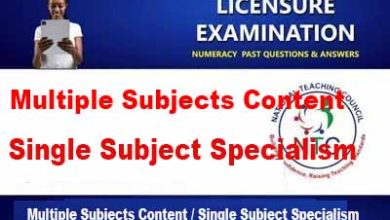
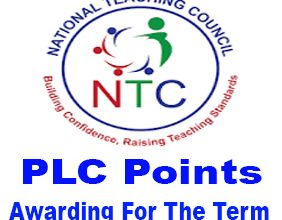

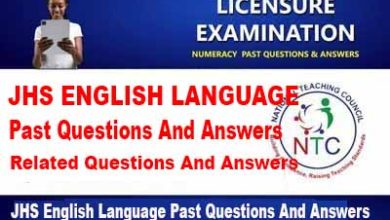
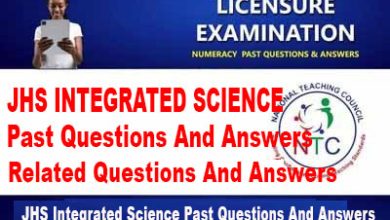
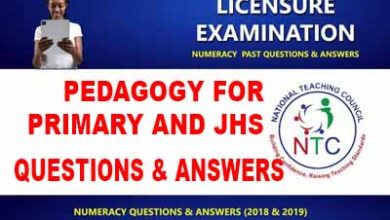
5 Comments